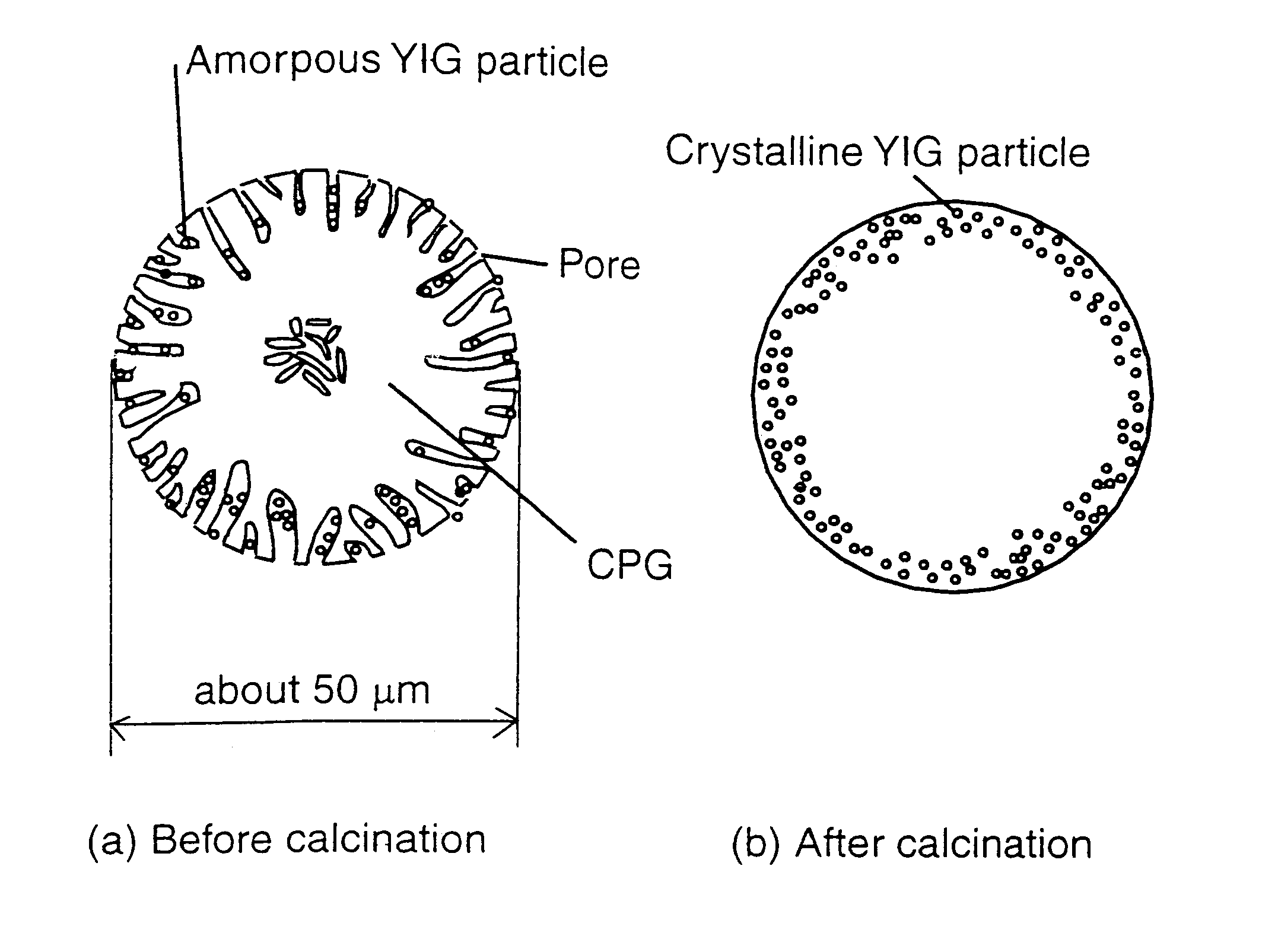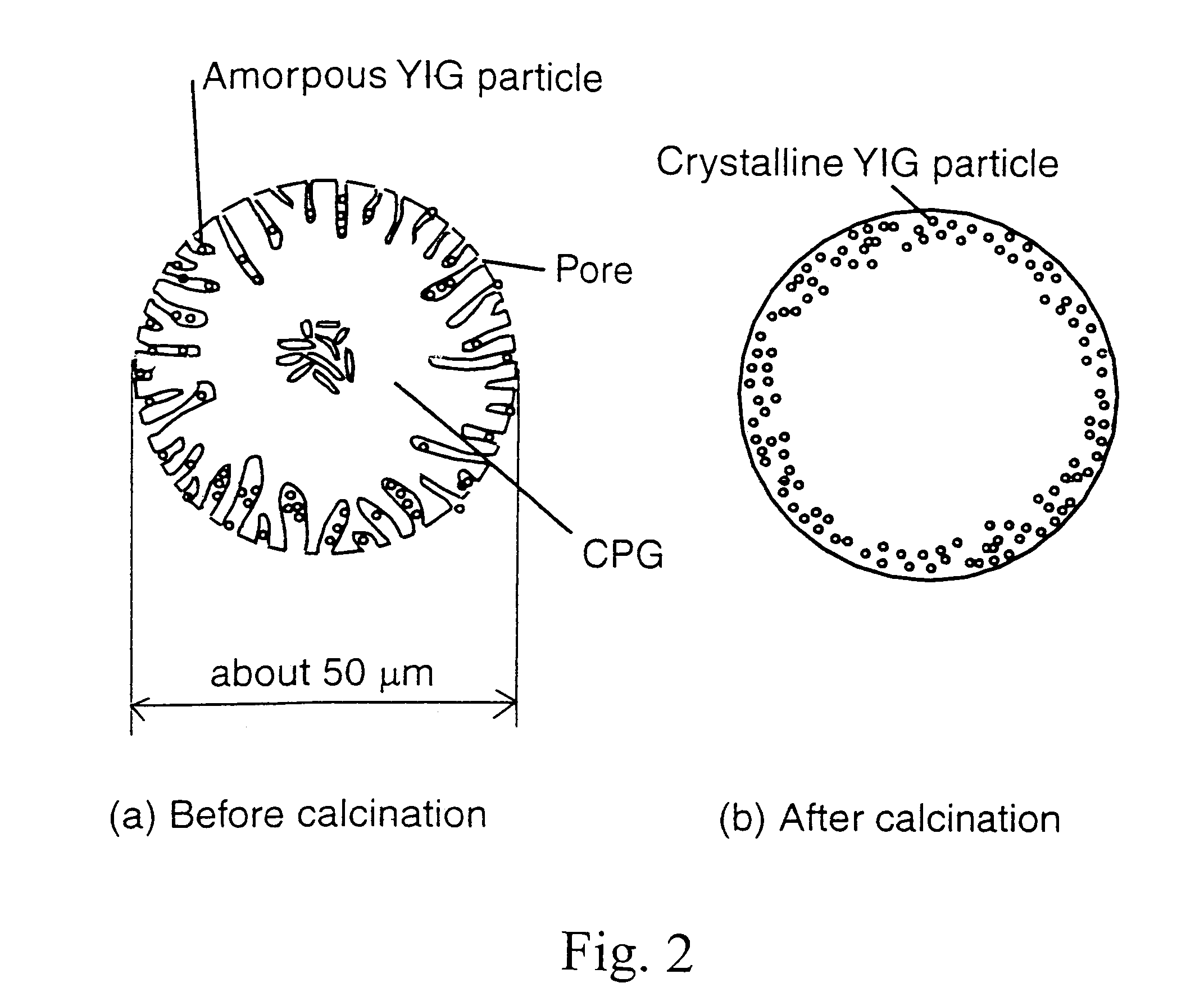Glass composite including dispersed rare earth iron garnet nanoparticles
a rare earth iron garnet and composite technology, applied in the field of glass/nanoparticle composites, can solve the problems of large portion of particles remaining coagulated, the intrinsic magnetic characteristics of the nanoparticles are often difficult or impossible to discern, and the tendency of magnetic nanoparticles to spontaneously coagula
- Summary
- Abstract
- Description
- Claims
- Application Information
AI Technical Summary
Benefits of technology
Problems solved by technology
Method used
Image
Examples
Embodiment Construction
[0020]The following examples set forth the production and testing of exemplary glass / nanoparticle composites in accordance with the invention. It is to be understood, however, that these examples are provided by way of illustration and nothing therein should be taken as a limitation upon the overall scope of the invention.
Preparation Methods
[0021]The amorphous YIG nanoparticles were prepared by the alkoxide method. Broadly speaking, in this method the starting materials are solutions of Fe3+ alkoxide Fe(OR)3 and a solution of yttrium alkoxide Y(OR′)3 where R and R′ are respectively taken from the group consisting of the alkyl groups. The two solutions are mixed to provide a stoichiometric Fe:Y ratio of 5:3, and the mixture is heated to boiling with vigorous stirring. Hot water vapor is introduced into the mixture to cause hydrolysis, thereby yielding nanoparticles of the mixture of amorphous iron oxide and yttrium oxide expressed by the equation
5Fe(OR)3+3Y(OR′)3÷24H2O[3Y(OH)3][5Fe(O...
PUM
| Property | Measurement | Unit |
|---|---|---|
| temperature | aaaaa | aaaaa |
| temperature | aaaaa | aaaaa |
| temperature | aaaaa | aaaaa |
Abstract
Description
Claims
Application Information
 Login to View More
Login to View More - R&D
- Intellectual Property
- Life Sciences
- Materials
- Tech Scout
- Unparalleled Data Quality
- Higher Quality Content
- 60% Fewer Hallucinations
Browse by: Latest US Patents, China's latest patents, Technical Efficacy Thesaurus, Application Domain, Technology Topic, Popular Technical Reports.
© 2025 PatSnap. All rights reserved.Legal|Privacy policy|Modern Slavery Act Transparency Statement|Sitemap|About US| Contact US: help@patsnap.com



